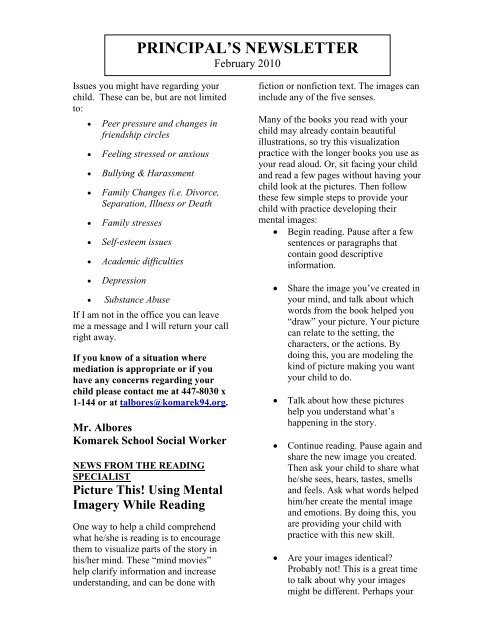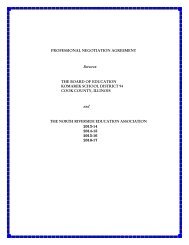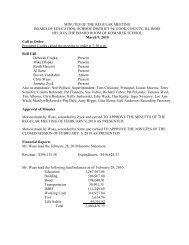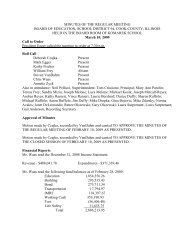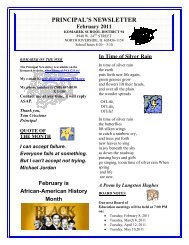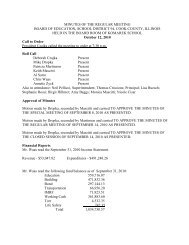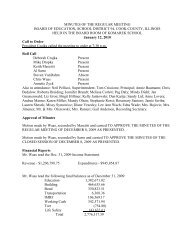Feb_ 10 - Komarek School District 94
Feb_ 10 - Komarek School District 94
Feb_ 10 - Komarek School District 94
You also want an ePaper? Increase the reach of your titles
YUMPU automatically turns print PDFs into web optimized ePapers that Google loves.
PRINCIPAL’S NEWSLETTER<br />
<strong>Feb</strong>ruary 20<strong>10</strong><br />
Issues you might have regarding your<br />
child. These can be, but are not limited<br />
to:<br />
• Peer pressure and changes in<br />
friendship circles<br />
• Feeling stressed or anxious<br />
• Bullying & Harassment<br />
• Family Changes (i.e. Divorce,<br />
Separation, Illness or Death<br />
• Family stresses<br />
• Self-esteem issues<br />
• Academic difficulties<br />
• Depression<br />
• Substance Abuse<br />
If I am not in the office you can leave<br />
me a message and I will return your call<br />
right away.<br />
If you know of a situation where<br />
mediation is appropriate or if you<br />
have any concerns regarding your<br />
child please contact me at 447-8030 x<br />
1-144 or at talbores@komarek<strong>94</strong>.org.<br />
Mr. Albores<br />
<strong>Komarek</strong> <strong>School</strong> Social Worker<br />
NEWS FROM THE READING<br />
SPECIALIST<br />
Picture This! Using Mental<br />
Imagery While Reading<br />
One way to help a child comprehend<br />
what he/she is reading is to encourage<br />
them to visualize parts of the story in<br />
his/her mind. These “mind movies”<br />
help clarify information and increase<br />
understanding, and can be done with<br />
fiction or nonfiction text. The images can<br />
include any of the five senses.<br />
Many of the books you read with your<br />
child may already contain beautiful<br />
illustrations, so try this visualization<br />
practice with the longer books you use as<br />
your read aloud. Or, sit facing your child<br />
and read a few pages without having your<br />
child look at the pictures. Then follow<br />
these few simple steps to provide your<br />
child with practice developing their<br />
mental images:<br />
• Begin reading. Pause after a few<br />
sentences or paragraphs that<br />
contain good descriptive<br />
information.<br />
• Share the image you’ve created in<br />
your mind, and talk about which<br />
words from the book helped you<br />
“draw” your picture. Your picture<br />
can relate to the setting, the<br />
characters, or the actions. By<br />
doing this, you are modeling the<br />
kind of picture making you want<br />
your child to do.<br />
• Talk about how these pictures<br />
help you understand what’s<br />
happening in the story.<br />
• Continue reading. Pause again and<br />
share the new image you created.<br />
Then ask your child to share what<br />
he/she sees, hears, tastes, smells<br />
and feels. Ask what words helped<br />
him/her create the mental image<br />
and emotions. By doing this, you<br />
are providing your child with<br />
practice with this new skill.<br />
• Are your images identical?<br />
Probably not! This is a great time<br />
to talk about why your images<br />
might be different. Perhaps your


